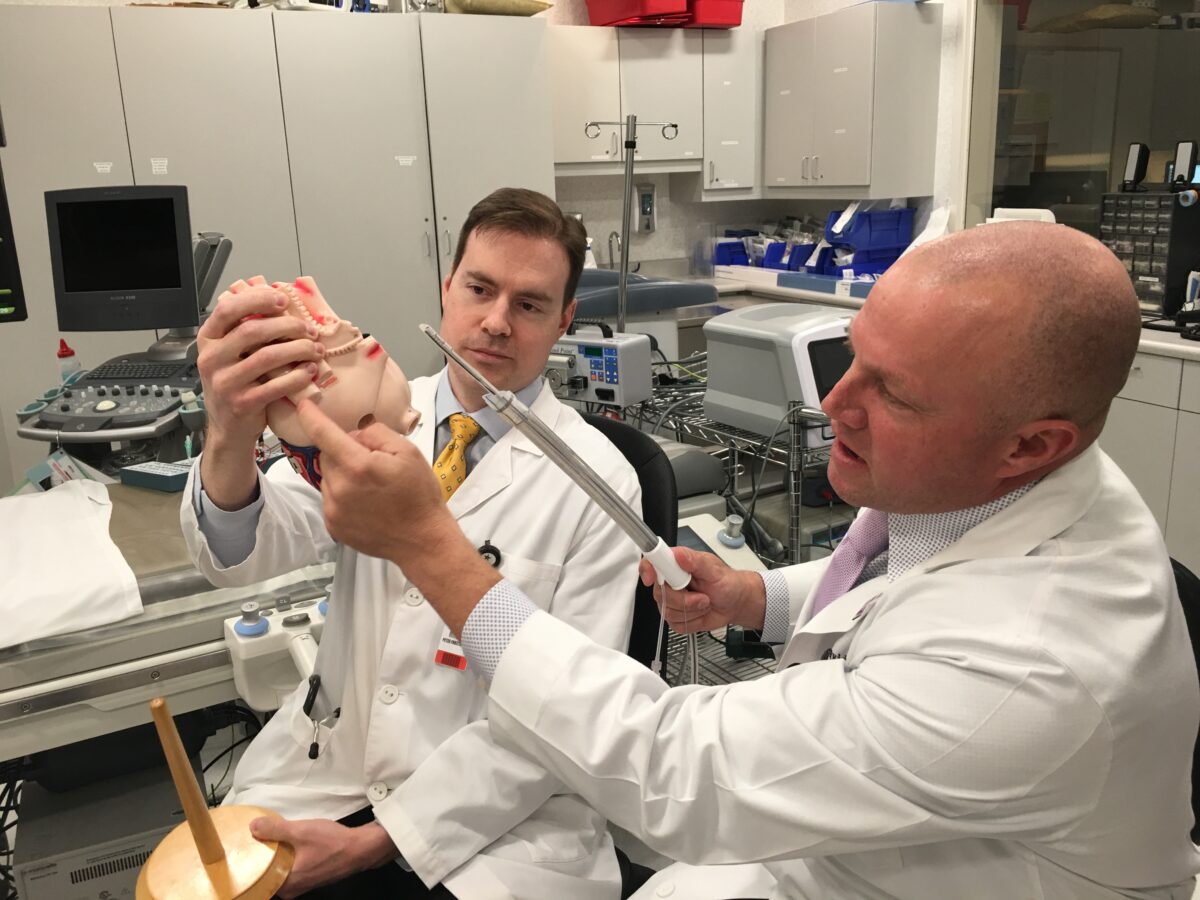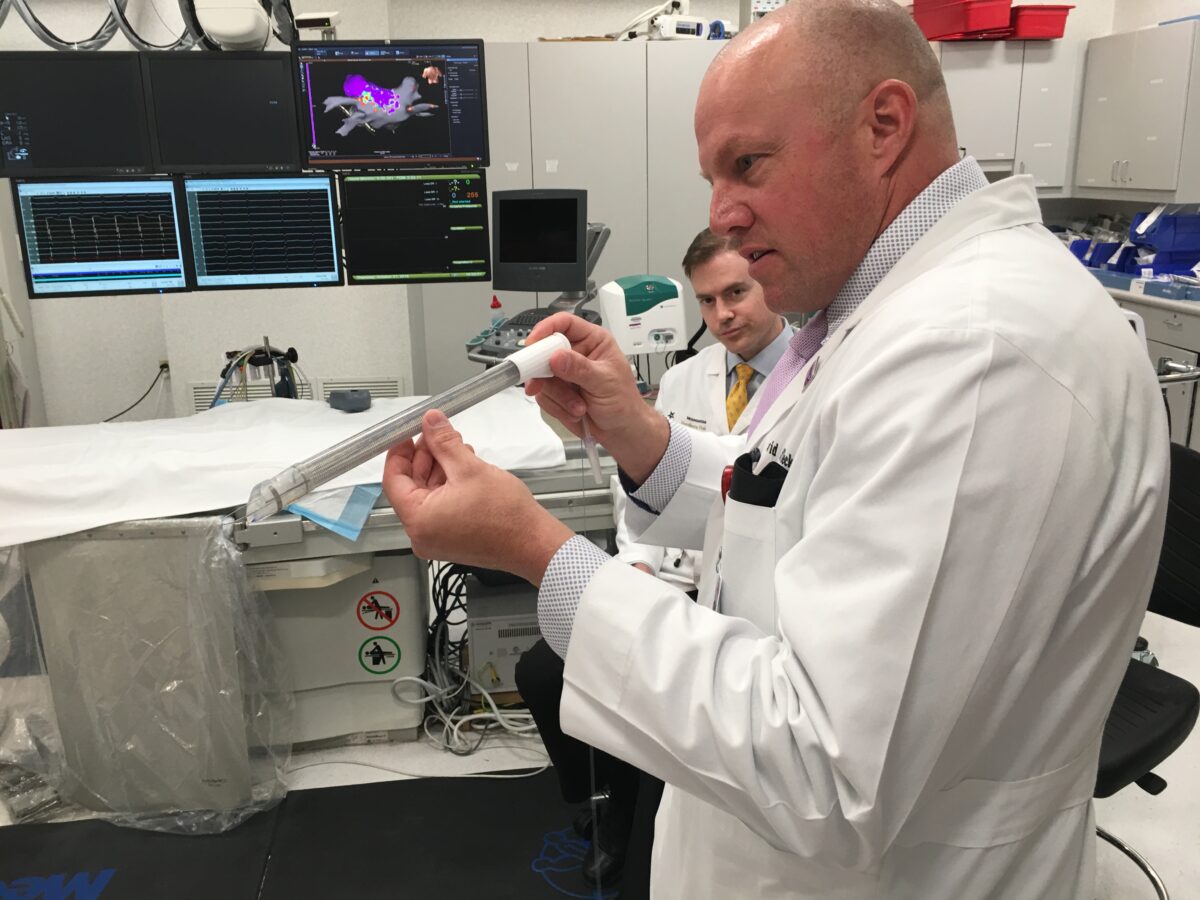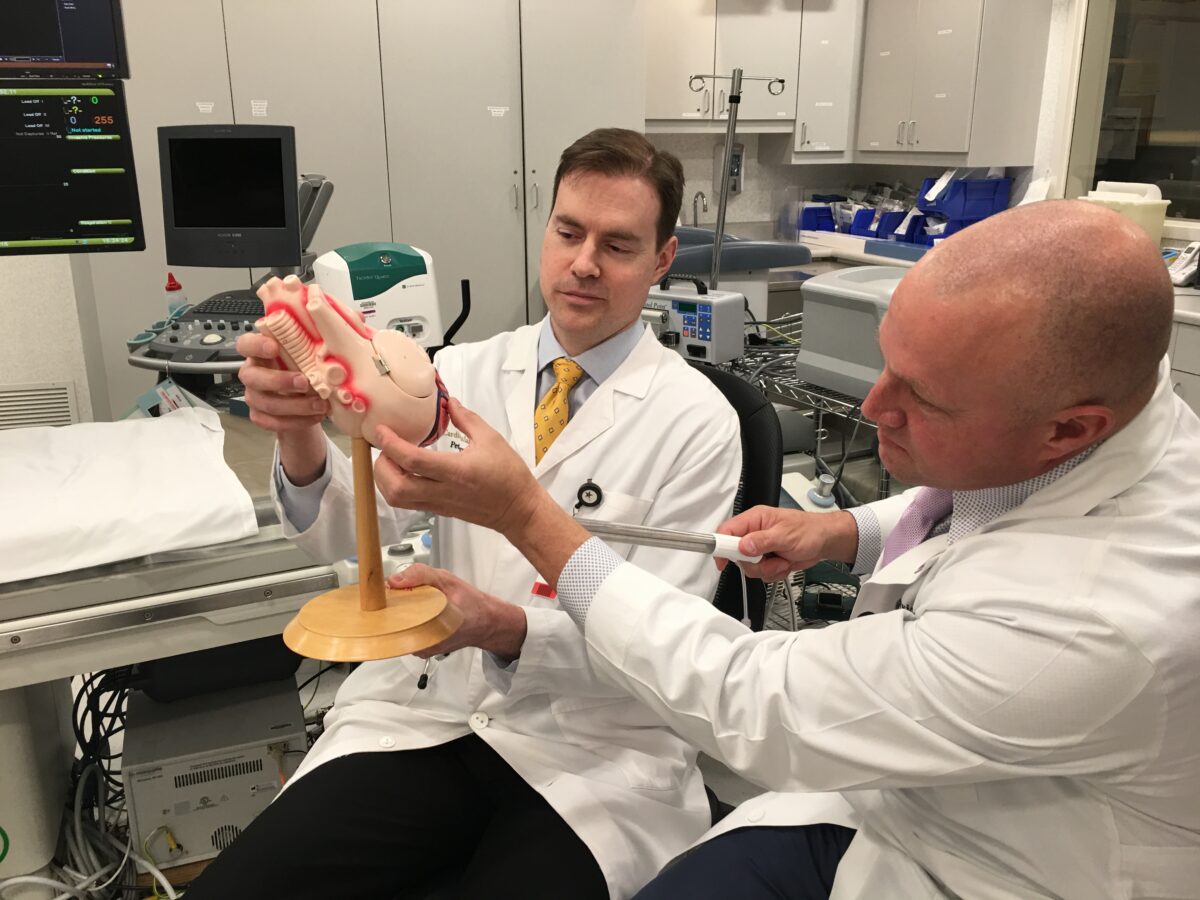Ablation procedure used to treat atrial fibrillation at Utah’s Ogden Regional Medical Center
OGDEN — Stairs are no longer the enemy.
That’s how Dick Walter describes how he feels two months after having a procedure to treat atrial fibrillation.
Walter, 69, of Syracuse, is the first person in Utah to undergo convergent ablation at Ogden Regional Medical Center, and Dr. David G. Affleck, a cardiovascular surgeon and Dr. Peter G. Forstall, a cardiac electrophysiologist, are the only two doctors in the state performing the procedure at Ogden Regional and St. Mark’s Hospital in Salt Lake City.
“I had the procedure at Ogden Regional on Aug. 22. I feel good and I feel lucky these two doctors were around at the right time for me,” Walter said. “I’m back to gardening, taking care of the lawn and doing genealogy work, which requires me to walk up and down the stairs several times a day. I can now say that stairs are no longer my enemy.”

Supplied photo/Joshua LeVitre
Dick Walter
Walter began feeling tired and listless back in 2008. His doctor diagnosed him with atrial fibrillation, a condition that causes a quivering, irregular heartbeat. Walter went to a cardiologist, who confirmed the diagnosis.
“AFib is the most common heart arrhythmia problem,” Forstall said. “Millions of people have it. Some people never have any symptoms and others can have mild to chronic symptoms, which may lead to blood clots, stroke and other heart problems.”
When people do experience symptoms, Forstall said, they can include a feeling of the heart skipping beats, a pounding or racing heartbeat, nausea, weakness, fatigue, light-headedness and dizziness.
Walter said when he was first diagnosed, doctors shocked his heart back into a normal rhythm.
“But I had to keep going back,” Walter said. “The last time I had it, they had a hard time restarting my heart. It took them three times and after that, I just felt worse.”
In 2014, Walter had a catheter ablation procedure in an attempt to correct the problem, but at the beginning of this year, he was feeling awful again.
“I couldn’t have the same procedure I had in 2014 because they had to go in and collapse the lungs and I have chemically induced emphysema, probably from Agent Orange when I was in the Vietnam War. I also worked at Hill Air Force Base where I worked around some nasty chemicals, paints and other fumes, so I was no longer a candidate.”
Fortunately, Walter said, he did qualify for convergent ablation.
“With this procedure, we don’t have to deflate the lungs or put the patient on a bypass machine, and we’re able to perform it with very small incisions in the abdomen,” Affleck said.
During the procedure, Affleck makes three small incisions in the abdomen under the rib cage and inserts an endoscope through the diaphragm that enables him to see the outside of the heart. Using an endoscope and a surgical ablation tool, he places a series of ablations, or controlled burns, in specific locations on the outside surface of the heart.
Forstall then threads a catheter through the femoral vein in the groin to the inside of the heart and fills in gaps with more burns in areas that the surgeon cannot reach on the outside surface. The combined series of connected burns more effectively creates solid scar tissue that block the storm of chaotic electrical signals that cause AFib.
“The recovery time is faster,” Affleck said. “Instead of staying in the hospital five to seven days, patients can now go home after three or four days. The success rate is also very good.”
However, Forstall said, this is not a procedure that can be done in an emergency situation. It has to be carefully planned.
“We put the patient on blood thinners a month before the procedure to lower their risk of stroke,” he said. “While the risk is very small, it’s still a risk and we monitor the patient very carefully before, during and after the procedure.”
The patient’s heart rate is also monitored through a small device implanted just beneath the skin and sends regular reports to the doctor. In addition, Walter carries a device that he can hold up against his chest if he starts to experience symptoms. The device will indicate whether or not he’s truly having an AFib episode.
“AFib has many different triggers, and we can never say a person has been completely cured,” Forstall said. “There’s no magic pill, but we’re making vast improvements and learning a lot form the surgical data. This procedure, combined with the collaboration of myself and Dr. Affleck is very advanced and has a really good success rate, so it’s been pretty exciting.”
Although this procedure is a new option in Utah and other states, it has been conducted approximately 2,000 times worldwide.



